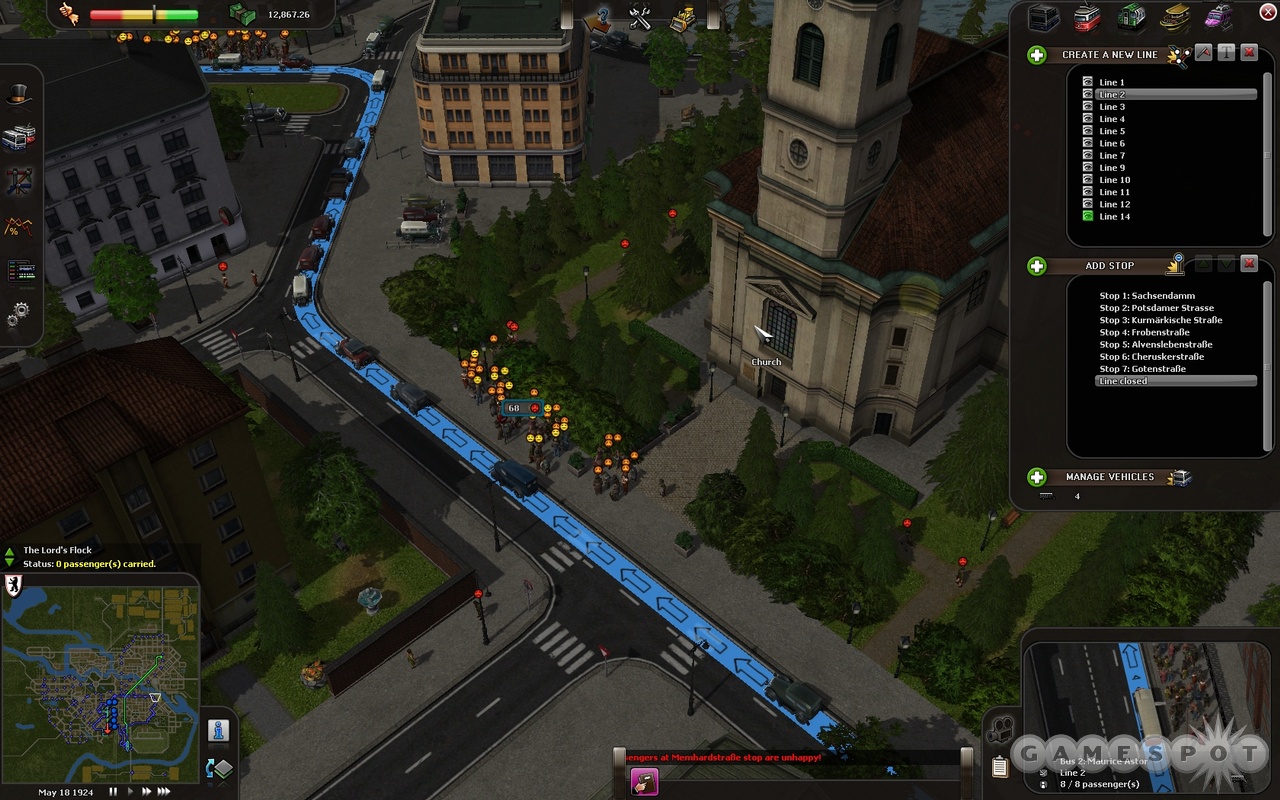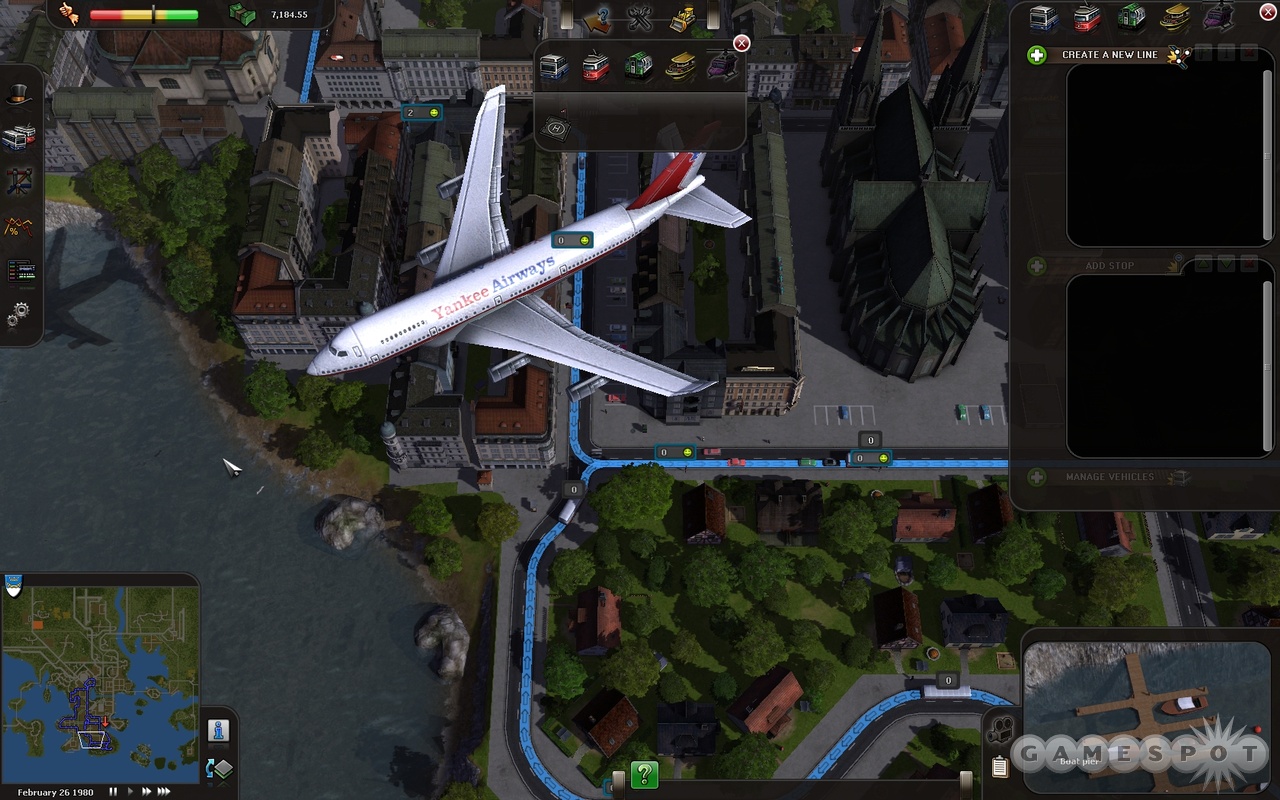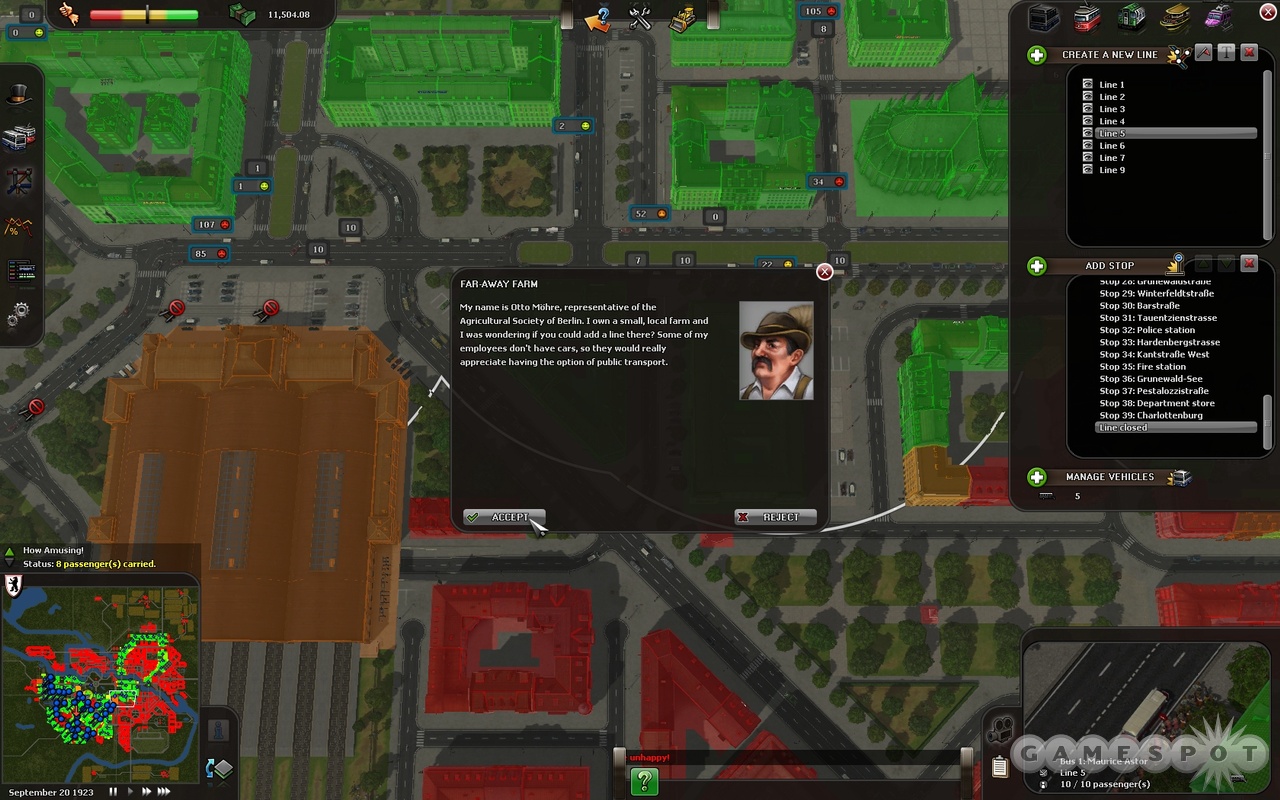Managing mass transit in a metropolis might not sound like a lot of fun in the real world, but Cities in Motion manages to make a virtual take on this ostensibly grueling task enjoyable. Developer Colossal Order has taken the SimCity theme and stripped out everything but the transit system, placing you in charge of making sure that Joe Commuter can get from home to work and back again. Outstanding attention to detail and cities with realistic traffic flows make the game an enjoyable if somewhat repetitious challenge.

Running the transit systems of four major European burgs from the beginning of the modern transportation era in 1920 through 2020 is the heart of Cities in Motion. So you get to shuffle commuters around in Berlin, Helsinki, Vienna, and Amsterdam via air, land, and water. Technology moves forward with the decades, so you gain access to bigger buses, better subway cars, and helicopter taxis as the years go by. A sandbox mode is also featured, along with an interactive tutorial that does a good job of walking you through the basics of gameplay. There is no multiplayer, although a map editor is on offer to provide added replay value for DIYers.
The presentation is simple and straightforward. Gameplay is totally focused on transit, so all you need to worry about is setting up profitable routes. There are no greater municipal concerns to get in between you and the roads, aside from some minor frills like being able to take out loans and run ad campaigns trumpeting your services. City maps are attractive but are lacking in atmosphere and are somewhat utilitarian, presumably to best show off the game's focus on roadways. The layout is a touch like a planning map, with all streets neatly squared off. The complete absence of weather effects and a day-night cycle adds to the sterile backdrop; the sun is always shining and birds are cheerily chirping away behind the honks of cars and the Simlish-styled grunts of pedestrians. It's all a touch eerie, mainly since you don't expect old European towns like Amsterdam and Berlin to look so clean and untouched.
The interface laid over top of these cities is very good, however. Transit lines are denoted in different colors, and various overlays and graphs can be called up to reveal detailed information, such as commuter satisfaction, wait times, profitability, the price of fuel, and so forth. There is micromanagement involved, although the interface lets you cut through most of it. The nitty-gritty involves going through the steps required to set up routes for your five forms of transit. Nothing is particularly soul-crushing, although the repetition gets stale after a while because you're basically doing the same thing when laying out routes whether you're running bus lines, drilling subway tunnels, or laying down tram tracks. You choose a route, plop down bus stops, tram stops, subway stations, and the like, and then go over everything again, ordering your drivers where to stop to pick up passengers. Finally, you close off the route loop, buy the vehicles needed, and then hit the streets in search of making a few bucks. Profit and happy people come next, if you've done things correctly.

And that's where things get tricky. Laying out sensible, cost-effective routes is tough in Cities in Motion, even on the easiest of the three difficulty settings. The populace is divided into seven classes, including deadbeat students, blue-collar workers, and tourists, and all have their specific needs when it comes to public transit. So you're stuck trying to please a lot of masters. Random scenario goals also run you all over the place. So in addition to simply trying to stay solvent to beat the overall campaign, you're given bonus objectives that require you to link up the outskirts with the downtown, get people to church, show how cool and modern you are with a brand-new subway line, service a new casino, and so forth. None of these objectives are necessary to your success, although the cash and reputation rewards come in handy. You can string routes everywhere to try to cover all of the bases, but this of course winds up costing you a ton of money and creating a multicolored mess that looks like someone just sprayed silly string all over your monitor. (You can turn off routes on the map, thankfully, but it's still hard to keep track of what you're supposed to be doing when you have a couple of dozen or more lines running.)
While making sense of everything isn't easy, there is a real logic behind how the four cities function. Workers try to make it to their factory jobs, and visitors try to check out touristy hotspots like cathedrals and amusement parks. You can easily find yourself hooked on a city, playing "just one more line" into the wee hours of the morning. To succeed, you have to link routes together and create the most cost-effective and timely webs of transit lines that connect all city neighborhoods. You even have to link different types of transit to make the big bucks. Bus lines, for instance, seem best employed to haul people from the sticks to the money-earning metro and tram lines downtown. You have to suss it all out with a careful look at the map and the graphical overlays that divide up neighborhoods into colored blocks, which forces you into some serious strategizing to maximize efficiency and minimize the chance of running into bank-account-killing traffic snarls. Figuring out how the cities come together is very rewarding, much like solving a particularly intricate puzzle.
Your customers are about the only source of real frustration. More detailed feedback would make it easier to deal with customer complaints. Unhappy commuters are represented by mobs of gripers topped with frowning face icons, which aren't specific enough to tell you what problems you need to work on. As a result, you feel a little out to sea when trying to placate upset citizens. For example, when people are mad along bus stops because of wait times, do you add more buses to the existing routes or lay down new routes? The lone saving grace is that upset citizens often end up just wandering off or taking cabs. At least you can make people wait for a bus without running the risk that they'll burn down the town hall, which makes them a lot more easygoing than the usual city-building game rioters. Still, the addition of some sort of traffic advisor popping up every so often to make direct suggestions about how to tailor your routes to meet specific circumstances would be a big plus.

The only serious drawback with Cities in Motion is the single-minded nature of the simulation. You need to have--or at least be able to develop--a real love of mass transit to get much out of the game. Unlike in the usual SimCity clone, you can't just skip on to some other aspect of virtual city planning whenever the whole subway thing gets a little old. But with that said, the game does what it does very well, especially when you consider how much of a simulation you get for the low $20 price. Even municipal experts would be hard pressed to tell the difference between real cities and the virtual ones here because of the realistic traffic patterns and commuter demands. If you long to make the trains run on time, this is your game.